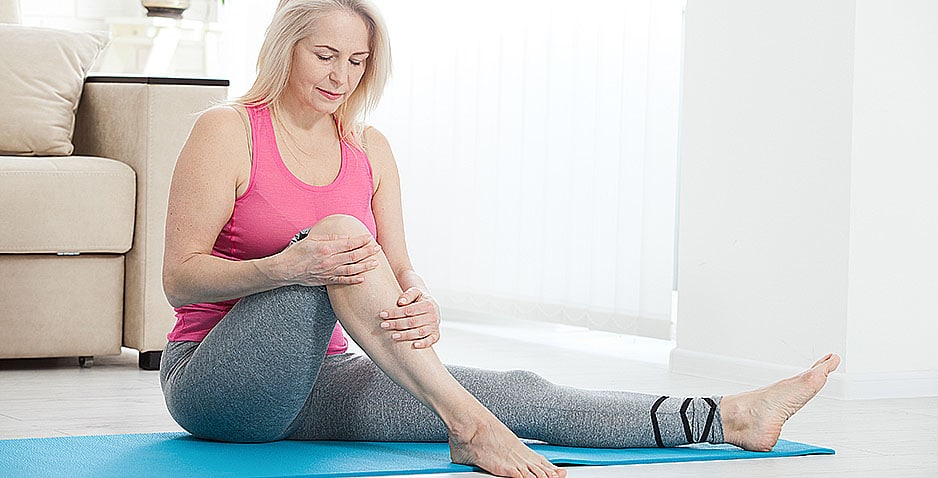Orthopedic health, a pivotal facet of our overall well-being, involves the intricate network of bones, joints, muscles, and related structures essential for seamless movement and functionality. There are common orthopedic conditions and their treatments available. From osteoarthritis to herniated discs, there are multiple challenges these conditions pose. One notable solution, replacement disc surgery, emerges as a key focus, promising transformative outcomes in the pursuit of enhanced orthopedic health.
Common Orthopedic Conditions
Orthopedic conditions are problems that affect our bones, joints, muscles, and other parts of the musculoskeletal system. These conditions can cause pain, stiffness, and difficulty moving.
Osteoarthritis
Osteoarthritis is a common condition where the protective cartilage that cushions the ends of bones wears down over time. This can result in pain, swelling, and difficulty moving the affected joint. Osteoarthritis commonly affects the knees, hips, and hands. Age, injury, and obesity can contribute to its development.
Rheumatoid Arthritis
Unlike osteoarthritis, rheumatoid arthritis is an autoimmune condition. This means that the body’s immune system mistakenly attacks the joints, leading to inflammation and joint damage. Rheumatoid arthritis often affects joints on both sides of the body, such as wrists and knees. It can cause pain, swelling, and joint deformities.
Fractures
A fracture occurs when a bone breaks. This can happen due to a fall, a strong impact, or repetitive stress on the bone. Fractures can be simple, where the bone breaks but stays in place, or compound, where the bone pierces through the skin. Common symptoms include pain, swelling, and difficulty using the injured area.
Sprains
A sprain happens when the ligaments, which are tough bands connecting bones, are stretched or torn. This can occur during sudden twists, falls, or impacts. Symptoms of a sprain include pain, swelling, and difficulty moving the affected joint. Common areas include ankles, wrists, and knees.
Strains
Strains involve the stretching or tearing of muscles or tendons, the tissues that connect muscles to bones. Overexertion, improper lifting, or sudden movements can cause strains. Symptoms include pain, muscle spasms, and difficulty moving the affected muscle. Commonly strained areas include the back and hamstrings.
Bursitis
Bursitis is the inflammation of the bursae, small sacs filled with fluid that cushion and lubricate joints. Repetitive movements or pressure on joints can lead to bursitis. The affected area becomes swollen, tender, and painful. Common sites for bursitis include the shoulders, elbows, and hips.
Tendinitis
Tendinitis occurs when tendons, which attach muscles to bones, become get inflammation. Overuse, repetitive motions, or injuries can cause tendinitis. Common symptoms include pain, swelling, and difficulty moving the joint. Common areas include the shoulders, elbows, and heels.
Herniated Disc
A herniated disc happens when the soft, gel-like center of a spinal disc pushes through a crack in the tough exterior. This can irritate nearby nerves, causing pain, numbness, or weakness. Herniated discs often occur in the lower back and neck and can result from aging, lifting heavy objects, or sudden twists.
Common Orthopedic Treatments
Orthopedic treatments are diverse medical interventions to alleviate pain and enhance the function of the musculoskeletal system, encompassing bones, joints, muscles, and related structures. These treatments aim to restore mobility, reduce discomfort, and improve overall quality of life.
Physical Therapy
Physical therapy stands as a cornerstone in orthopedic care. Therapists like knee specialist Woodbridge collaborate with patients to develop targeted exercises and stretches, fostering strength, flexibility, and mobility. This approach proves particularly beneficial post-surgeries, fractures, or conditions like arthritis. By actively engaging patients in their recovery, physical therapy empowers individuals to regain control and function in affected areas.
Medications
Medications play a pivotal role in managing the pain and inflammation with orthopedic conditions. Anti-inflammatory drugs, such as ibuprofen, contribute to reducing swelling, while pain relievers like acetaminophen offer relief from discomfort. In more severe cases, doctors may prescribe stronger medications to address the specific needs of individual patients.
Orthopedic Surgery
When conservative treatments fall short, orthopedic surgery emerges as a potential solution. Surgical interventions aim to correct structural issues, repair injuries, or replace damaged joints. Common orthopedic surgeries include joint replacements (such as knee or hip replacements) and procedures to address fractures or torn ligaments. Surgical options are often put forward after other less invasive measures have been explored.
Braces and Supports
Braces and supports provide external assistance to joints and muscles, offering stabilization, strain reduction, and support for healing. These aids, such as knee braces, ankle supports, and wrist splints, are employed during the recovery phase or for ongoing support in managing chronic conditions. They play a crucial role in preventing further injury and promoting the healing process.
Corticosteroid Injections
Corticosteroid injections involve the direct injection of anti-inflammatory medication into the affected joint or tissue, providing rapid relief from pain and swelling. This approach is commonly used for conditions like arthritis, bursitis, or tendonitis. By targeting the source of inflammation, corticosteroid injections offer a localized and effective treatment option.
Assistive Devices
Assistive devices are instrumental in enhancing the daily lives of individuals with orthopedic conditions. Canes, crutches, and walkers assist with balance and mobility. Specially designed tools with ergonomic features can reduce strain on joints during tasks such as cooking or dressing. These devices promote independence, improve functionality, and minimize the risk of further injury.
Platelet-Rich Plasma (PRP) Therapy
Platelet-rich plasma (PRP) therapy utilizes a patient’s own blood to stimulate healing. After drawing blood, it is processed to concentrate platelets, which contain growth factors that aid in tissue repair. PRP therapy is frequently employed for conditions like tendonitis and ligament injuries, harnessing the body’s natural healing mechanisms to promote recovery.
Joint Aspiration
Joint aspiration involves using a needle to remove excess fluid from a swollen joint, alleviating pain and improving joint function. This procedure is often performed in conjunction with other treatments, such as corticosteroid injections, to enhance their effectiveness. Joint aspiration proves valuable in managing conditions characterized by joint swelling and fluid accumulation.
Exercise Programs
Tailored exercise programs, by orthopedic specialists or physical therapists, are essential components of rehabilitation. These programs focus on strengthening muscles, improving flexibility, and promoting overall joint health. Regular exercise not only aids in recovery but also contributes to long-term management and prevention of orthopedic conditions.
Conclusion
In the realm of orthopedic health, the path to recovery is multifaceted, with a spectrum of treatments designed to address specific conditions and individual needs. Whether it’s the meticulous exercises prescribed by orthopedic doctor for knee pain Woodbridge, the targeted relief provided by medications, or the transformative impact of orthopedic surgery, each intervention plays a crucial role in restoring functionality and minimizing discomfort. Braces, corticosteroid injections, and assistive devices further contribute to the holistic approach of orthopedic care. Through understanding common conditions and embracing diverse treatments, individuals can actively participate in their journey toward optimal orthopedic well-being.



